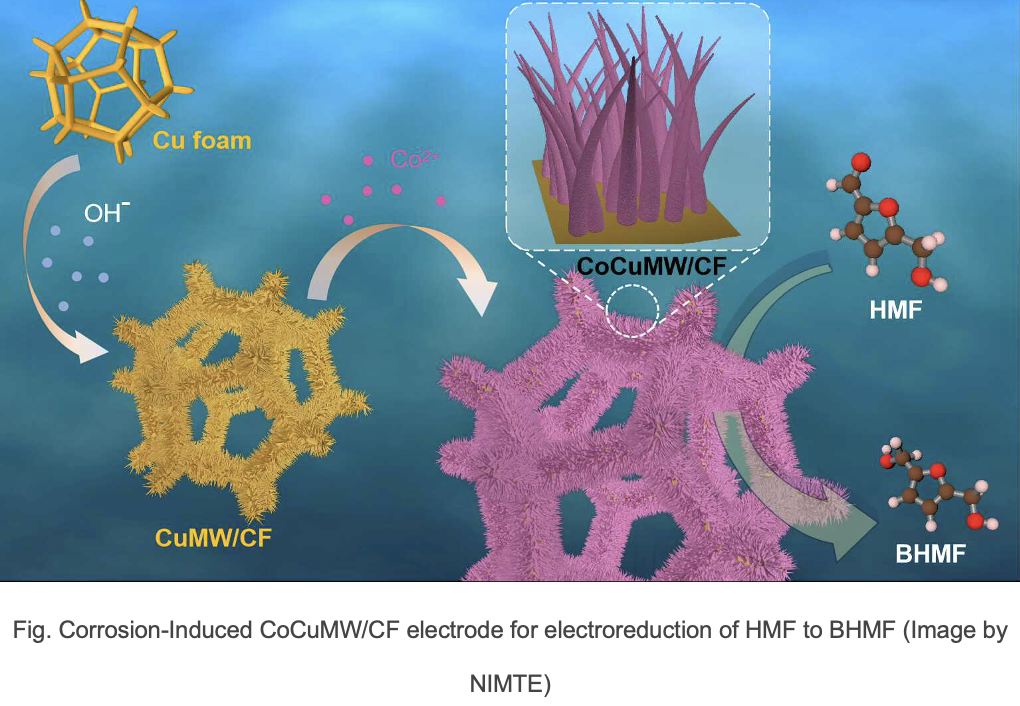http://english.cas.cn/newsroom/research_news/chem/202502/t20250210_900291.shtml
5-Hydroxymethylfurfural (HMF) serves as a bridge molecule connecting natural biomass with downstream fine chemicals. The electrocatalytic conversion of HMF to 2,5-bis(hydroxymethyl)furan (BHMF) represents a promising approach for generating high-quality bio-based chemicals. A crucial factor in electrocatalytic reactions is the design and deployment of cost-effective metal catalysts. The principle of spontaneous metal corrosion to prepare such catalysts may enable the production of highly efficient catalysts at an extremely low cost.
A team led by Prof. ZHANG Jian from the CAS Ningbo Institute of Materials Technology and Engineering (NIMTE) has fabricated CoCu microwire arrays on copper foam (CoCuMW/CF) using cobalt ion-enhanced corrosion induction. The CoCuMW/CF electrode enables efficient electrochemical reduction of HMF to 2,5-bis(hydroxymethyl)furan (BHMF), which can be further converted into environmentally friendly plastic or rubber products, high-value derivatives, and high-quality bio-based chemicals through simple methods.
The CoCuMW/CF electrode demonstrated a remarkable HMF conversion rate of 95.7% and a BHMF yield of 85.4% at the potential of -0.5 V vs. reversible hydrogen electrode (RHE), indicating superior performance for HMF hydrogenation in a neutral electrolyte. Notably, the activation energy for the HMF electrocatalytic reduction was 16.6 ± 2.5 kJ·mol-1, significantly lower than in thermocatalysis.

